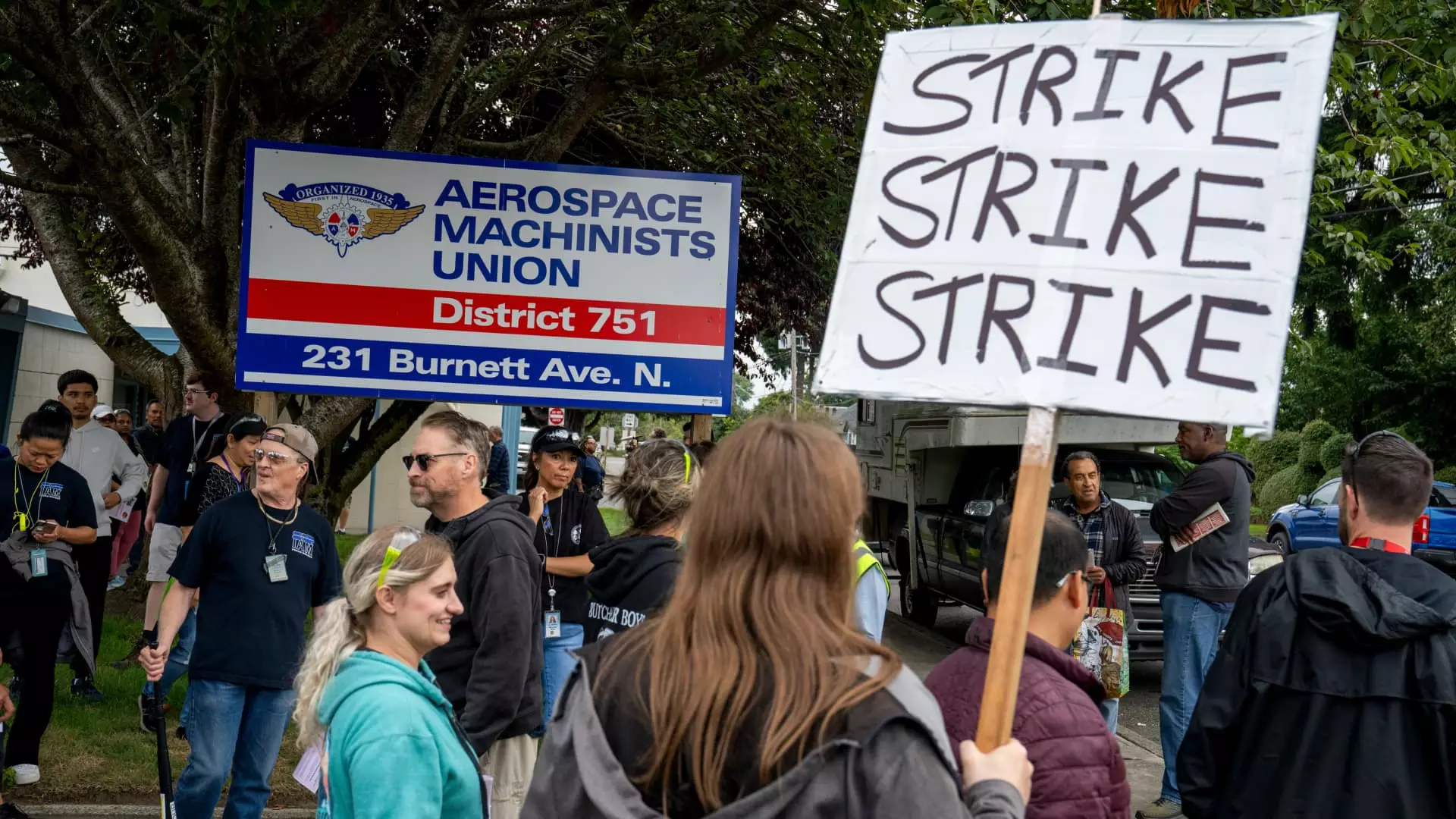In a significant turn of events, Boeing’s workforce is poised to strike, an action that could halt the production of the majority of the company’s aircraft. More than 30,000 machinists, predominantly from the Seattle area and Oregon, decisively rejected a proposed labor contract in an overwhelming vote, showcasing deep dissatisfaction with Boeing’s handling of labor relations. This decision to strike highlights not only labor dissatisfaction but also raises critical questions about Boeing’s operational future, especially in the backdrop of recent safety and production challenges faced by the aerospace giant.
The striking workers, represented by the International Association of Machinists and Aerospace Workers (IAM), voted 94.6% against the tentative agreement presented by Boeing. This overwhelming rejection serves as a clear indicator of the workers’ frustrations, particularly regarding wages and working conditions. Union leader Jon Holden has positioned this strike as an “unfair labor practice strike,” emphasizing allegations of coercive tactics employed by Boeing to manage employee dissent. Such accusations point to a tense labor climate where workers feel their voices are not only suppressed but disregarded.
The IAM’s stance reflects a broader trend in labor relations, where employees in various sectors assert their rights in the face of corporate decisions perceived as inequitable. This is particularly relevant as the strike comes at a time when many workers nationwide are pushing for better wages and improved working conditions. The insistence on a substantial wage increase, notably the sought-after 40% raise, underscores the employees’ desire for compensation that reflects rising living costs and better aligns with the demands of their labor.
In response to the unfolding situation, Boeing has refrained from immediately commenting on the strike but did attempt to assuage employee concerns during negotiations. Company executives, including the CEO of Boeing’s commercial airplane division, have characterized the rejected proposal as historically advantageous for workers. They justified the 25% wage increase alongside improvements to health care and retirement benefits, suggesting that this offer represented the pinnacle of what the company could provide. However, the disconnect between the company’s perspective and the workers’ sentiments highlights a potential lack of understanding regarding the economic pressures faced by employees.
Another dimension to this labor dispute is Boeing’s history with its workforce, particularly regarding its decision to shift certain productions to non-union facilities. Such moves have engendered distrust and resentment among workers, making it increasingly difficult for the company to negotiate from a position of unity and trust. The promise to build the next commercial jet in the unionized Seattle area was likely an attempt to mend fences, yet it seems to have fallen short of convincing the workforce.
The ramifications of this strike extend far beyond the immediate concerns of labor relations. Financial analysts have estimated that a prolonged strike could lead to losses upwards of $1.5 billion for Boeing in just 30 days, destabilizing not only the company’s production capabilities but also impacting its extensive supply chain. The stakes are particularly high given Boeing’s existing financial strain, having already incurred a staggering $8 billion in losses this year due to various operational challenges.
Furthermore, the potential disruption in aircraft production comes at a time when the aerospace sector is steadily recovering from previous downturns exacerbated by the COVID-19 pandemic. If workers continue to strike, the ripple effect may jeopardize not only Boeing’s market position but also influence supplier relations, which are crucial for the timely delivery of aircraft components.
The striking Boeing workers represent just one facet of an ongoing struggle between labor and management in a rapidly evolving economic landscape. This pivotal moment presents an opportunity for Boeing to reassess its negotiation strategies and engage more constructively with its employees. The forthcoming days will be crucial in determining not only the future of Boeing’s labor relations but also the company’s ability to navigate through a complex economic environment while maintaining production efficacy. Failure to address these underlying issues might not only hinder Boeing’s recovery efforts but also reverberate throughout the broader aerospace industry.


Leave a Reply